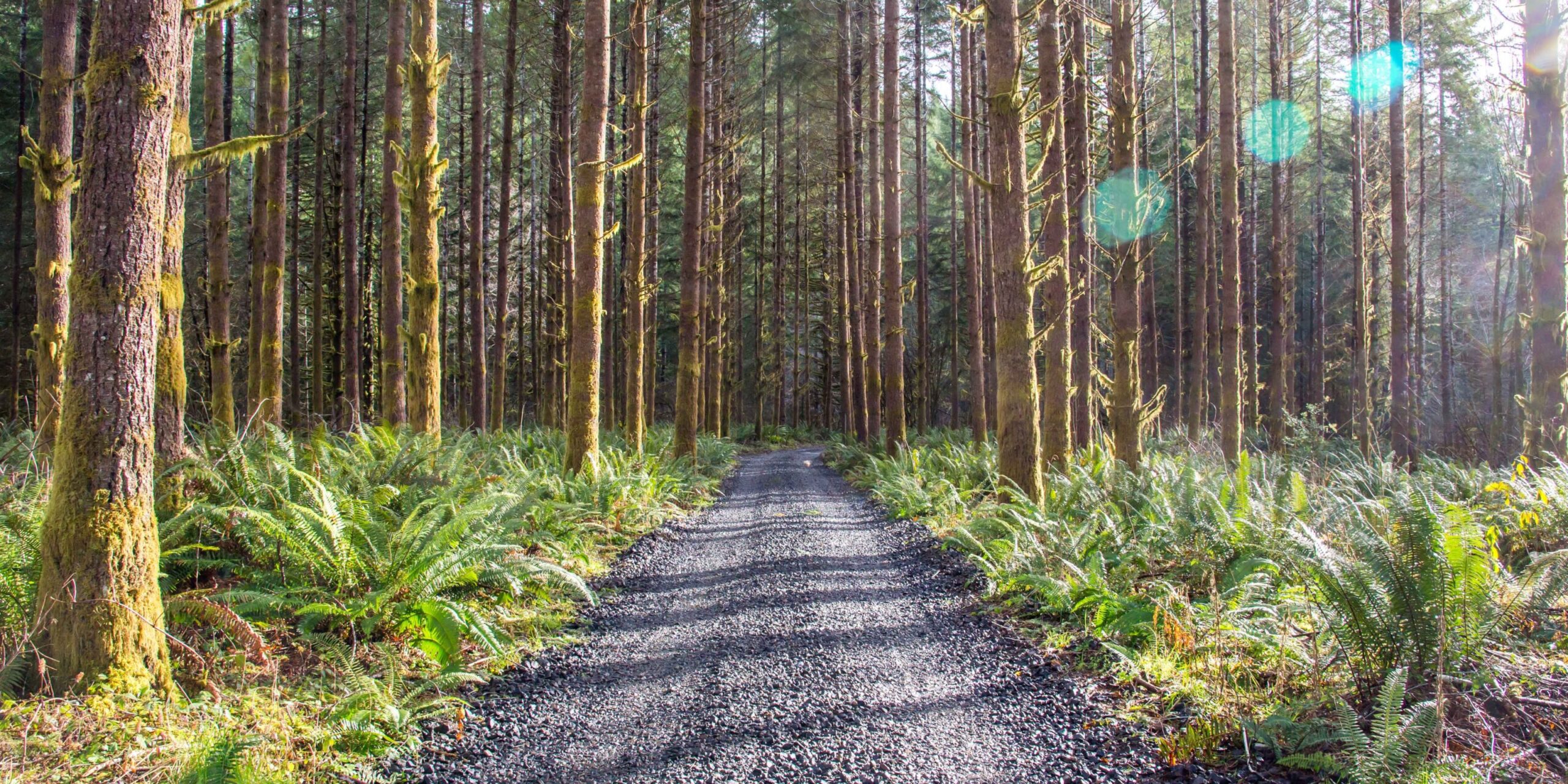
Work. Play. Renew.
How do you deliver a 75 foot Christmas tree to downtown Portland?

A giant Christmas tree arrived at Portland’s Pioneer Courthouse Square on Nov. 15 – but the actual process to select, cut, and transport the tree began months before out in the woods.
Oregon Forests Forever recently spoke with Rodney Jacobs, Assistant Unit Manager of the North Tree Farm for Stimson Lumber, to learn more about this annual tradition.
Jacobs grew up in West Linn and graduated from Oregon State University. He has been in charge of selecting and delivering the perfect tree to the Pioneer Courthouse Square every year since Stimson first started providing one in 2002.
“It’s a labor of love,” Jacobs said about process. And there certainly is a good amount of labor and time that goes into making downtown Portland light up each year.
The requirements from Pioneer Courthouse Square are simple: The perfect tree must be a 75-foot-tall Douglas-fir. Stimson has its own set of additional requirements to make sure they provide the best tree each year.

The tree always comes from Stimson’s Forest Grove tree farm, near the company’s Gaston mill. Jacobs starts looking in mid-September for tall, straight, structurally-sound, evenly shaped trees. He’s also keeping in mind Stimson’s harvest schedule, making note of trees that could be useful next year, and if a beautiful tree might be on the harvest schedule and won’t be around next year, he makes sure to nab it before it’s harvested.
Once he finds the right candidate, he brings a representative from Pioneer Courthouse Square out to visit and give it the thumbs up. Jacobs also visits the tree three or four different times with his colleagues after it’s chosen so he and others can view it in different light and from different angles to make sure it still looks the part. Then they get to work – it takes nearly a week before the tree arrives in downtown Portland.

The first step is to build a spot in the woods for the crane that will harvest the tree. This happens in early October and is a full day of work for a team of contractors. Next, in order to accomplish the traditional full Christmas-tree shape, roughly 400 extra limbs are cut from trees adjacent to the selected tree. Hundred-foot trees that grow surrounded by others in the forest aren’t quite as bushy as 10-foot trees grown specifically for Christmas trees, so crews collect plenty of extra 15-foot limbs that will be bundled and delivered with the tree before being attached with “L hooks” to fill it out, creating the traditional iconic look.
Finally the tree is cut by climbers from the City of Portland who climb the tree, strap it to the crane so when the tree is cut it won’t be damaged in the fall. Then the crane carefully places it, and the additional limbs, onto Redmond Heavy Hauling trucks.

The tree and limbs will sit at the Gaston mill for a couple of days so the limbs can be tied down for travel and the trailer can be washed and fixed with the special Stimson banner. Then it is driven to downtown Portland for the parade along SW 6th Ave to its destination, led by lumberjack Santa.

Jacobs describes the effort as labor of love because the trucking outfit, crane company, and tree climbers all donate their time to make sure the tree gets safely from the forest to Portland.

“Stimson’s corporate office looks out over Pioneer Courthouse Square,” Jacobs explained. “There’s a special sense of pride for our employees when we can look out the window at the tree we know grew in our tree farm and see it all lit up for Christmas. It’s a meaningful moment that brings rural and urban communities together to enjoy the beauty of the forest and the holiday spirit.”
